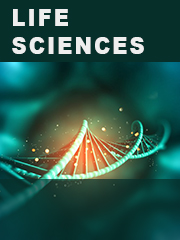
Karlsson K, Malmberg P: Characterization of exposure to molds and actinomycetes in agricultural dusts by scanning electron microscopy, fluorescence microscopy and the culture method. Jørgensen K: Survey of pork, poultry, coffee, beer and pulses for ochratoxin A. Some naturally occurring substances: food items and constituents, heterocyclic aromatic amines and mycotoxins. Monographs on the evaluation of carcinogenic risks to humans. Holmberg T, Breitholtz-Emanuelsson A, Haggblom P, Schwan O, Hult K: Penicillium verrucosum in feed of ochratoxin A-positive swine herds. Zeitschrift für Ernährungswissenschaft 1998, 37, 2-12.ġ4. Höhler D: Ochratoxin A in food and feed: occurrence, legislation and mode of action. Hjort C, Andersen P, Schonheyder H, Stenderup A: Occurrence of Aspergillus umbrosus antibodies in Danish farmers. Levels of ochratoxin A and anti-Penicillium antibodies in blood of farm workers 77ġ2. Hill RA, Lacey J: Penicillium species associated with barley grain in the U.K. In: Castegnaro M, Pleština R, Dirheimer G, Chernozemsky IN, Bartsch H (Eds): Mycotoxins, Endemic Nephropathy and Urinary Tract Tumours, 159-164. Hald B: Ochratoxin A in human blood in European countries. Zeitschrift für lebensmittel-untersuchung und forschung 1988, 186, 114-117.ġ0. Gareis M, Märtlbauer E, Bauer J, Gedek B: Bestimmung von Ochratoxin A in Muttermilch. Mycotoxins, Fungi and Quality in Drying and Storage, 441-476. Frisvad JC, Samson A: Mycotoxins produced by species of Penicillium and Aspergillus occurring in cereals. Eduard W: Exposure to non-infectious microorganisms and endotoxins in agriculture.

Di Paolo N, Guarnieri A, Loi F, Sacchi G, Mangiarotti AM, Di Paolo M: Acute renal failure from inhalation of mycotoxins. In: Castegnaro M, Pleština R, Dirheimer G, Chernozemsky IN, Bartsch H (Eds): Mycotoxins, Endemic Nephropathy and Urinary Tract Tumours, 145-151. Creppy EE, Betbeder AM, Gharbi A, Counord J, Castegnaro M, Bartsch H, Moncharmont P, Fouillet B, Chambon P, Dirheimer G: Human ochratoxicosis in France. Breitholtz-Emanuelsson A, Fuchs R, Hult K: Toxicokinetics of ochratoxin A in rat following intratracheal administration. Breitholtz-Emanuelsson A, Olsen M, Oskarsson A, Palminger I, Hult K: Ochratoxin A in cow’s milk and in human milk with corresponding human blood samples. Bauer J, Gareis M: Ochratoxin A in der Nahrungsmittelkette. Avila R, Lacey J: The role of Penicillium frequentans in suberosis (respiratory disease in workers in the cork industry). Inhalatory exposure to OTA from farm working seems to be of minor importance compared to dietary intake.ġ. verrucosum, was not related to higher OTA serum levels. Farm working, or increased inhalatory exposure to P.


The mean IgG level was significantly higher among farm workers than controls. The OTA level in serum was unrelated to farm working, gender, age, and IgG level. All serum samples contained OTA (mean 397 ng/l, range 21-5534 ng/l). The concentration of OTA was determined by HPLC (DL 10 ng/l), and the IgG level was determined by ELISA. Blood samples from 210 participants were analysed for the presence of OTA and IgG antibodies against P. The purpose of this work was to investigate the level of OTA in blood samples from farm workers and non-farm working controls, and to examine if serum levels of OTA were related to inhalatory exposure to conidia of Penicillium verrucosum, the main OTA producer in temperate climates. In addition to dietary intake, exposure may occur by inhalation of toxin containing fungal conidia. Ochratoxin A (OTA) is a mycotoxin frequently found in human blood and milk samples in the colder climatic zones.


 0 kommentar(er)
0 kommentar(er)
